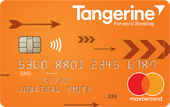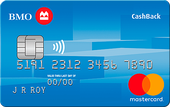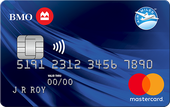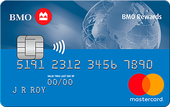If you have credit card balances that can't get paid down because of the high interest rate, balance transfer credit cards may offer the best opportunity to get out from under debt. Through their low promotional APRs, balance transfer cards could provide Canadians an opportunity to quickly pay down a card balance and get their credit back in order.
Although you can technically move balances between most credit cards, balance transfer promotion cards usually offer promotional interest rates which are significantly lower than traditional credit cards. With introductory periods between six and 24 months, you can take advantage of lower interest percentages and reduce your overall debt.
However, balance transfer credit cards aren't the best option for everyone. Like all credit cards, applying for and using these special credit cards requires discipline and smart money management. Here's everything you need to know before applying, and moving your first balance from an old credit card to your new credit card.
Why you should consider a balance transfer credit card
Balance transfer credit cards are among the best options for those who are struggling to pay down their debt. These lines of credit will offer a lower interest rate when you move your balance from one credit card to another, sometimes even a rate of 0%. If your interest rate is 18% or more, it may be beneficial to consider rolling over the account to a lower-interest card.
Consolidate debt onto one card
One of the biggest advantages of a credit card for balance transfers is being able to repay multiple debts with one card. Depending on how many cards you have and your overall credit card limits, moving the balances from multiple lines to one card can help you reduce your debt load, even if it has an annual fee.
Roll over personal loans at a lower APR
Some balance transfer credit cards offer the opportunity to roll over high-interest personal loans into a lower APR on their card. Before applying for any card, be sure to understand which balances are allowed for transfer, and which ones are excluded.
Watch out for high balance transfer fees
Although balance transfer credit cards offer a lower interest rate, they can also come with high balance transfer fees or an annual fee, which are ultimately added to the amount you owe. For example, if you owe $5,000 and your card has a 2% balance transfer fee, you will pay $100 in fees. If your promotional offer card has a balance transfer fee above 3%, you may want to do the math to determine if you will be saving money.
Check for minimum monthly repayments
Like all credit cards, you will have to make monthly minimum payments until the balance is paid off completely. With a low balance transfer rate, a credit card with a promotional offer gives you the option to pay more to reduce your debt faster. If you can't afford more than the minimum payment, you may want to carefully consider if a balance transfer card is right for you, because when the promotional period ends, the rate will revert to the card's standard interest rate – which could be very high.
Understand the interest rate after the promotional period ends
With most cards, the balance transfer rate is only for a limited period of time — from six months up to as long as two years. If you cannot pay off the balance before the promotional period expires, the remaining debt will revert to the card's normal interest rate, which can range from 12.99% to 22.99% and beyond. To get the most out of your balance transfer, be sure to pay off the debt before the promotional period ends.
Alternatives to balance transfer credit cards
If a balance transfer credit card isn't right for your financial situation, there are plenty of options available to Canadians, to help them get on a better footing:
- Personal loan for debt consolidation. Moving balances to a credit card will reduce your rate for a period of time between six and 24 months. But with most debt consolidation personal loans, your interest rate is locked in for the life of the loan, with a set monthly payment over a period of time ranging from three months to five years. With a debt consolidation personal loan you will also make regular equal payments over the life of the loan, rather than having the credit card option of making small, minimum repayments and even extending the payment term to go beyond the time limit of the promotional offer. Debt consolidation personal loans may also come with up-front costs, including lender fees, closing costs and early repayment fees.
- Refinance your home mortgage. If you have equity in your home (i.e. its market value is significantly higher than the loan secured against it) you could refinance your home for a higher loan amount and use the surplus cash you generate to repay your short-term debts. But you need to realise that you are converting short-term debt into long-term debt. So even though the interest rate on the mortgage will be lower than a credit card or personal loan interest rate, you could end up paying more in interest in total. You could also face early exit fees when paying off your existing mortgage, as well as fees to establish the new mortgage.
- Apply for a home equity line of credit. This is another way to convert your home equity into cash, but without refinancing your mortgage. It's effectively a revolving line of credit with your existing home lender, giving you access to an amount of cash limited by the equity you have in your home. Once again you'll pay a lower interest rate on your withdrawals than you would with a credit card or personal loan, but you are eroding your home equity.






